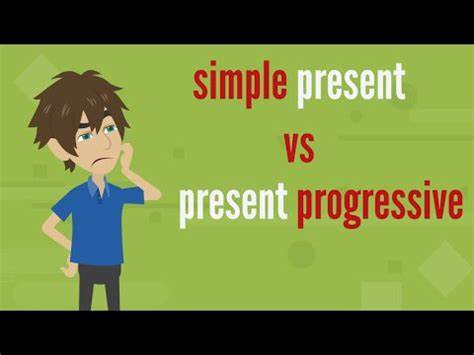Learning English can feel like trying to fit square pegs into round holes—especially when it comes to tenses. In the first of a series of blogs about tenses which are often confused, we look at two of the most frequently confused, which are the Present Simple and the Present Progressive (also called Present Continuous). Let’s untangle these tenses and make them your friends. By the end of this blog, you’ll know how to use them correctly and confidently.
Present Simple: The Routine Champion
The Present Simple is the dependable friend of English tenses. It’s used to describe things that are always true, happen regularly, or are fixed in time.
How to Form the Present Simple
- Base form for most subjects: “I walk,” “You walk,” “We walk,” “They walk.”
- Add -s for he/she/it: “He walks,” “She eats,” “It rains.”
When to Use It
- Habits and Routines:
- “I brush my teeth every morning.”
- Facts and Universal Truths:
- “Water freezes at 0°C.”
- Schedules and Timetables:
Use the Present Simple to talk about fixed, scheduled events in the future.- “The train leaves at 8:30 AM tomorrow.”
- “The movie starts at 7 PM tonight.”
Common Mistakes
- Forgetting the -s for third-person singular:
- Wrong: “She eat breakfast at 8 AM.”
- Right: “She eats breakfast at 8 AM.”
Present Progressive: The Action in Motion
The Present Progressive is the more dynamic sibling. It’s perfect for describing actions happening right now, temporary situations, and even plans for the near future.
How to Form the Present Progressive
- Combine am/is/are (depending on the subject) + the -ing form of the verb:
- “I am walking.”
- “You are eating.”
- “They are dancing.”
When to Use It
- Actions Happening Now:
- “I am reading this blog right now.”
- Temporary Situations:
- “She is staying with her cousin this week.”
- Plans for the Near Future:
Use the Present Progressive to talk about personal plans or arrangements.- “I am meeting Sarah for lunch tomorrow.”
- “We are going to the park this afternoon.”
Common Mistakes
- Using Present Progressive with Non-Action (State) Verbs:
Some verbs, like “know,” “believe,” “like,” “love,” “hate,” or “understand,” describe states rather than actions. These verbs don’t usually take the -ing form because they describe conditions or feelings that aren’t changing.- Wrong: “I am knowing the answer.”
- Right: “I know the answer.”
- Mixing Up Future Use:
Don’t confuse using Present Progressive for personal plans with the Present Simple for schedules. For example:- Acceptable but not as natural: “The train is leaving at 6 PM.”
- Right: “The train leaves at 6 PM.”
(Use the Present Simple because it’s a fixed timetable.)
Present Simple vs. Present Progressive: Future Focus
| Situation | Present Simple | Present Progressive |
|---|---|---|
| Fixed, scheduled events | “The plane departs at 5 PM tomorrow.” | — |
| Personal plans or arrangements | — | “I am having dinner with friends tonight.” |
Tip: Use the Present Progressive when talking about plans you’ve made or agreed upon with others, like “I am visiting my grandma next weekend.” Use the Present Simple for timetables or fixed programs, like “The train arrives at 8:30 AM tomorrow.”
Exercise: Test Your Knowledge
Choose the correct tense (Present Simple or Present Progressive) for the sentences below:
- Right now, I _______ (write) a blog.
- She always _______ (walk) to school.
- Look! The dog _______ (chase) its tail.
- We _______ (not/like) mushrooms.
- He _______ (study) for his exams this week.
- Water _______ (boil) at 100°C.
- The bus _______ (arrive) at 6 PM every day.
- I _______ (meet) my best friend for coffee tomorrow.
- At the moment, my brother _______ (watch) TV.
- The kids _______ (make) a lot of noise right now.
Answers
- am writing
- walks
- is chasing
- do not like
- is studying
- boils
- arrives
- am meeting
- is watching
- are making
Mastering tenses takes time, but think of it as a dance. With enough practice, you’ll know when to use the Present Simple to stay in step with facts and schedules, and when to glide into the Present Progressive for your plans and actions in motion. Just don’t dance into the sand witch! Keep practicing—you’re doing great! 🕺
If you have enjoyed reading this blog, please ‘like’ it and share it with your friends and colleagues, and if you know anyone who might be interested in my online one-to-one lessons, please do ask them to contact me to discuss how I can help them to excel in English.


Recent Comments